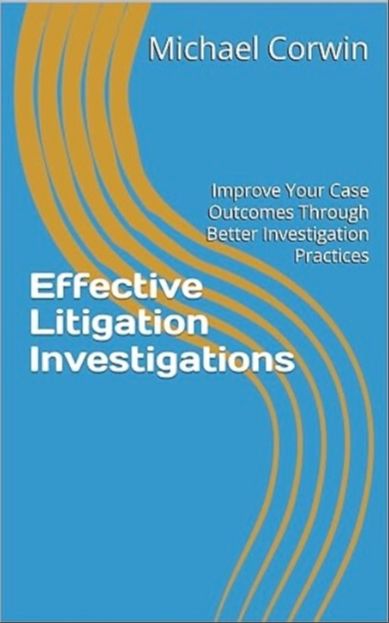Effective Litigation Investigations
Law firms improve your case outcomes through better investigation practices. Techniques and tips to help you develop better quality, admissible information outside of the formal discovery process.

Litigation results are determined by the quality of the information you develop. But legal professionals are not taught how to conduct effective litigation investigations causing you to rely on trial and error, and costly formal discovery.
Effective litigation investigations, referred to as non-statutory discovery, can greatly improve the quality of your evidence. Better evidence means better settlements, and jury awards.
Here's what's covered in the book:
- The 6-step witness interview process that ensures maximum results in this critical component of case preparation.
- How you can harness the power of public records to prove or disprove facts, locate witnesses, and impeach testimony.
- How to conduct background investigations on party opponents and their key witnesses that can alter the outcome of a case.
- How to locate and contact the difficult to find witness before the other side does.
- How to conduct an asset investigation to assist in deciding whether to accept or reject a policy limits offer.
- How to conduct effective investigations in cases involving civil rights violations, employment misconduct, wrongful death, and vehicle accidents.
- Pretext or legit? How to assess an employer's internal investigation for adequacy and sufficiency.
Michael Corwin spent 30 years conducting civil and criminal litigation investigations in Los Angeles, California, and Albuquerque, New Mexico. He has trained hundreds of attorneys, paralegals, and legal assistants in conducting effective litigation investigations, and served as a guest instructor at the University of New Mexico Law School. He has been featured in Professional Investigator Magazine, Dateline NBC, Authority Magazine, and Politico Magazine.
Buy on Amazon
Effective Litigation Investigations is available in paperback and Kindle formats.
Learn More